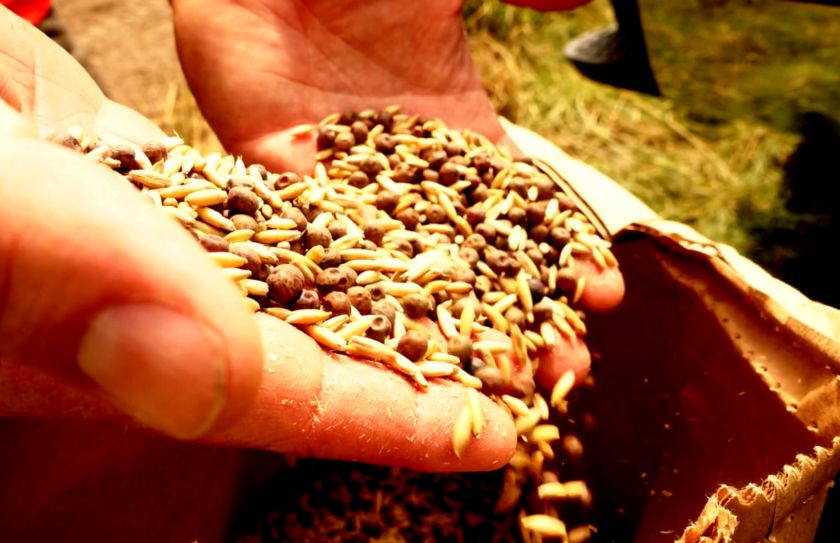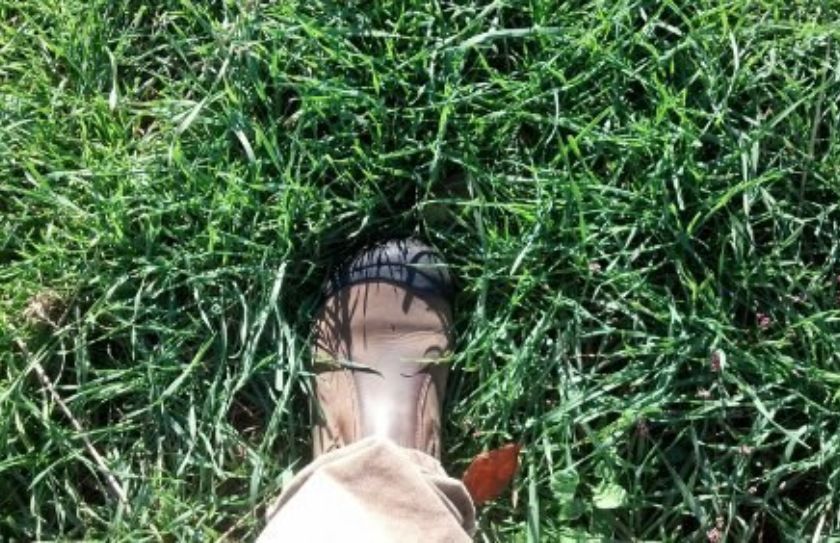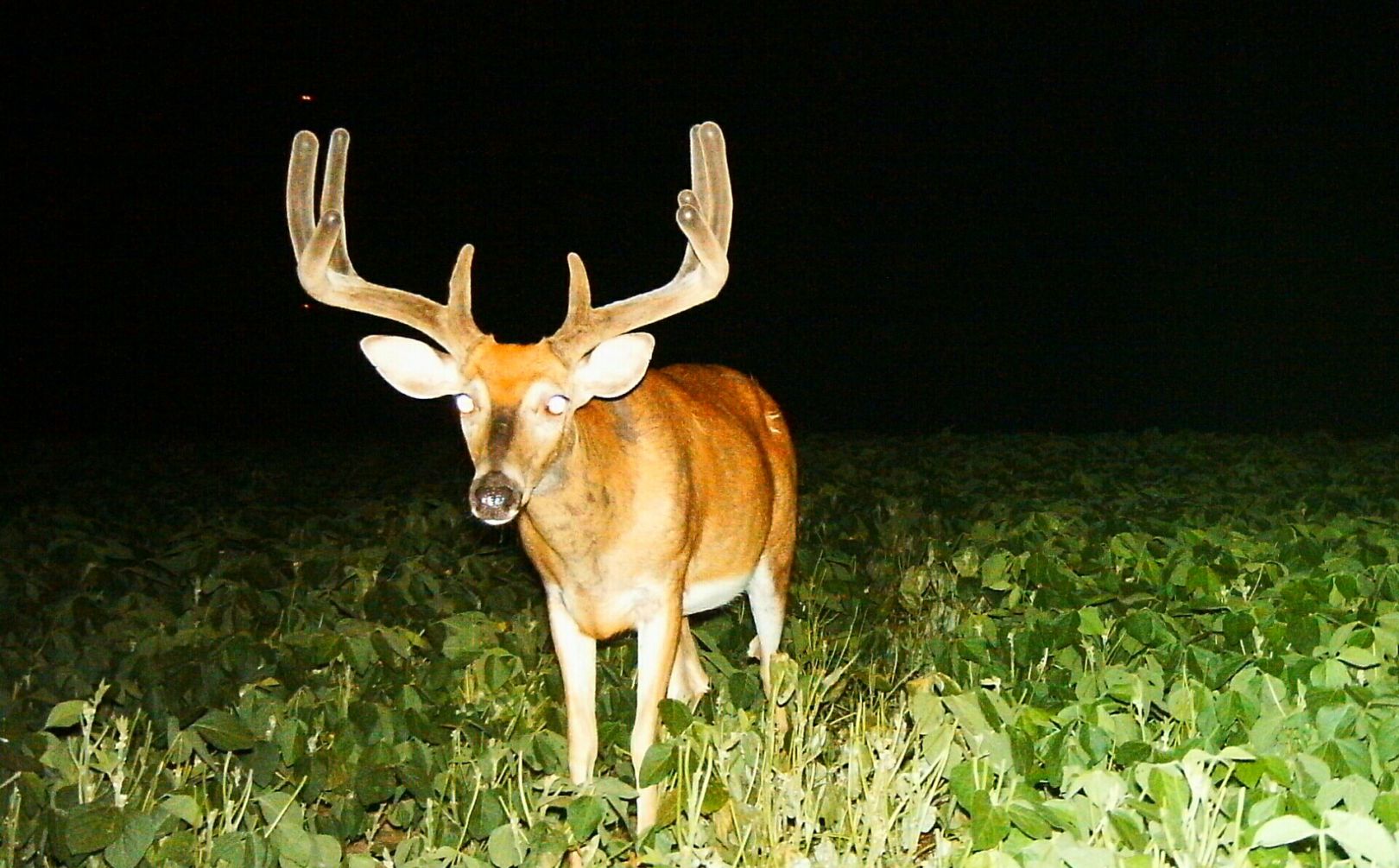
Have any of you ever planted soybeans for deer? If so, your collective experiences of success and failure, will have been extremely varied. Planting soybeans for deer can create the most powerful attraction that can ever be installed for deer, or they can leave you scratching your head and staring at an empty field of exposed soil and stems. There are several great reasons for the wide range of soybean food plot experiences, so make sure to find later in this article, to find out if soybeans are a good choice for you. However, from poor to perfect, here are the 3 most common results that you will find, when you decide to plant soybeans for deer:
1. Absolutely Destroyed
-Back in the mid 90s when I began my first food plot adventures, the common belief was that if you couldn't at least plant 5 acres of soybeans for deer, that they would be eaten long before the heart of the deer season. Throughout the last 20 years I have found 5 acres to be a very loose and highly misunderstood guideline, determined purely by the complexity of the conditions within the neighborhood. The majority of food plot plantings fail, because they are so heavily consumed during the late Summer, that there is nothing left for the most important periods of the hunt.

*My Whitetail Success by Design trilogy of books"Food Plot Success by Design"
2. Empty Dreams
-The heart of the deer season includes the majority of the later 1/2 of October in most Northern regions, the entire rut and a large portion of the most State's firearms seasons. Soybean plantings specifically for deer, in a portion of the whitetail range, will be largely ignored during the heart of deer season. If your soybean plot isn't completely destroyed prior to the heart of the season, or offering the perfect planting, than it is likely that you will ride the rollercoaster of great late Summer use, poor heart of the season use, followed by great use during the Winter.
3. The Perfect Food Plot Planting
-For reasons discussed shortly, a small portion of hunters will experience an incredible amount of foraging by deer, in their soybean plantings. In fact, there have been times when some of the largest numbers of deer that I have ever witnessed, have been feeding within a standing soybean field; even during the heart of the season!
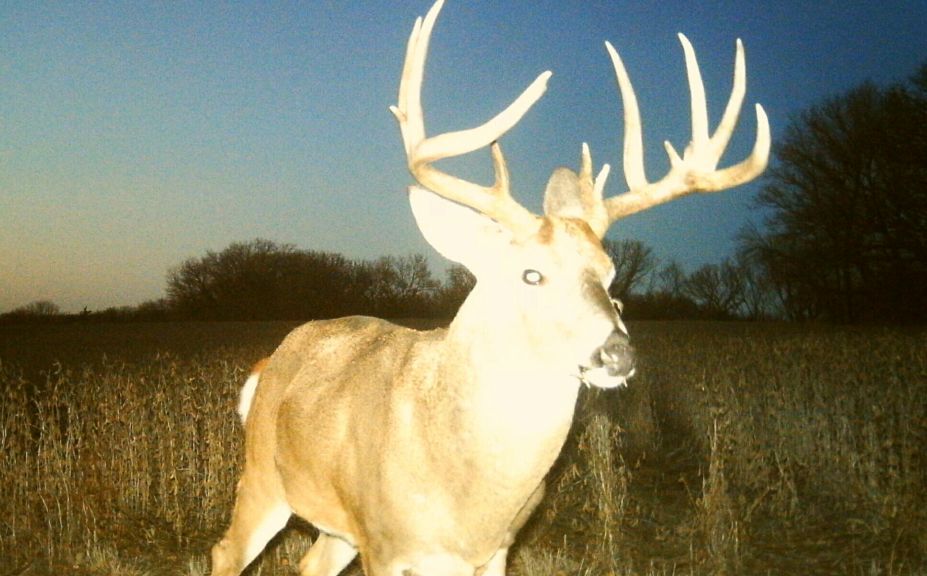
*Soybeans are undoubtably one of the most attractive food forage choices for Summer herds, but what happens when the leaves turn brown and mature bucks begin to make their Fall habitat shifts? For greater insight into how to capture the movements of Fall bucks, make sure to read, "The Annual Shift of Whitetail Habitat".
How Will Deer Utilize My Soybean Planting for Deer?
The use of soybean fields planted for deer, will vary greatly. A soybean food plot can offer great reward, and an even greater risk, depending on one of the 3 levels of soybean foraging described above. Before rushing blindly into the temptation of planting one of the most powerful food plot plantings that you can plant, make sure that you fully understand the complexity of the variables that will determine your individual level of success:
1. % of Agricultural vs. Wooded Settings
-My first soybean food plot was located within Northern MI's heavily forested wilderness setting consisting of 10s of thousands of public land acres, deer populations as low as 5 deer per square mile and a winter kill that included an average of 50% of all fawns. Sound extreme? It is, and so was the soybean use. By the beginning of bow season, not one leaf or stem remained, let alone any beans. At the same time, that same level of foraging has been mirrored by other similar locations that are far removed from major agricultural settings. When the % of cover increases, so does the potential foraging rate when planting soybeans for deer, due to the lack of quality complimentary forages. When beans are the only game in town, expect the masses to show up, and show up in heavy enough numbers that nothing will remain. Although I only planted 2 acres, the beans were so consumed so quickly, by so few deer, that I do not feel the experience would have been any different if I had scattered the plantings across the rest of the 8 acres of total food plot space. When there are very few quality complimentary Summer forages, you can expect soybean plantings to be destroyed, even when planting 5-10 acres or more.
2. Quality Complimentary Forages
-It's pretty darn tough to find high quality forages within northern habitat settings. Northern poor soils, short growing seasons and a lack of quality herbacious growth creates a lot hungry deer...at least hungry deer in search of quality food. But as the growing seasons increase and the local habitat produces high quality native forages, soybean plantings can often begin to receive much lower grazing rates. And that also extends to other varieties of food plot plantings as well, including brassicas. When a soybean leaf is the only source of green forage within a deer's diet expect heavy grazing pressure, but when other choices are plentiful the results may be much different, and that includes large portions of agricultural settings.When large agricultural fields of bean, corn and hay rotations are adjacent to your food plots of soybeans for deer, you can expect very little Summer grazing pressure, even with plantings of 2-5 acres or less.
3. Overall Deer Population Numbers
-Within low-quality natural forage habitats in Northern settings a small deer population can consume incredibly large quantities of soybeans, within a short period of time, due to the general lack of other quality options. However if those same deer numbers are present in a heavy agricultural setting the same sized soybean planting may not be touched at all. In some cases you could even make an arguement in various agricultural settings that if deer ignore a soybean food plot well into the middle of Winter, that the deer numbers may be too low, but of course there are many other variables. Locations with high deer numbers will sometimes experience heavy grazing pressure on plantings of soybeans, and locations with lower deer numbers (and high ag %s), will often experience lite grazing pressure by whitetails. However, the % of woods vs ag, as well as the amount of adjacent complimentary forages will determing grazing pressure on soybean food plots as well.
4. Established Patterns of Doe Factory Use
-What do you find when you combine high stem count Fall habitat for bucks, with high quality soybean plantings? You create high Summer populations of doe family groups. Although bucks will avoid the same cover during the Summer that they crave during the Fall, doe family groups do not. In fact, often the higher the stem count, the better the Summer fawning cover. So by adding plantings of soybeans for deer you often increase doe populations, and increase late Summer consumption of the immediate food sources. Some of the parcels that I have experienced around the country that have been over-run with does to the highest levels, have featured outstanding Summer soybean plantings. Soybeans are a great way to increase your Fall doe family group population. Is that a good thing? Maybe if you are attempting to increase herd numbers, but it can be highly detrimental if attempting to reduce antlerless numbers.
5. Poor Soil
-Although some may place the risk of soil type first when it comes to determining if they should plant soybeans or not, the 1st four factors should come first. Why? Because generally poor soil is not readily found in agricultural settings. If your soil is poor, and you are located in a high cover, low complimentary food source area, you will most likely be out of luck unless your soybean planting is 10 acres or more. You will have an extremely hard time overcoming poor soil, in a no-ag, no complimentary quality food source, high cover area.
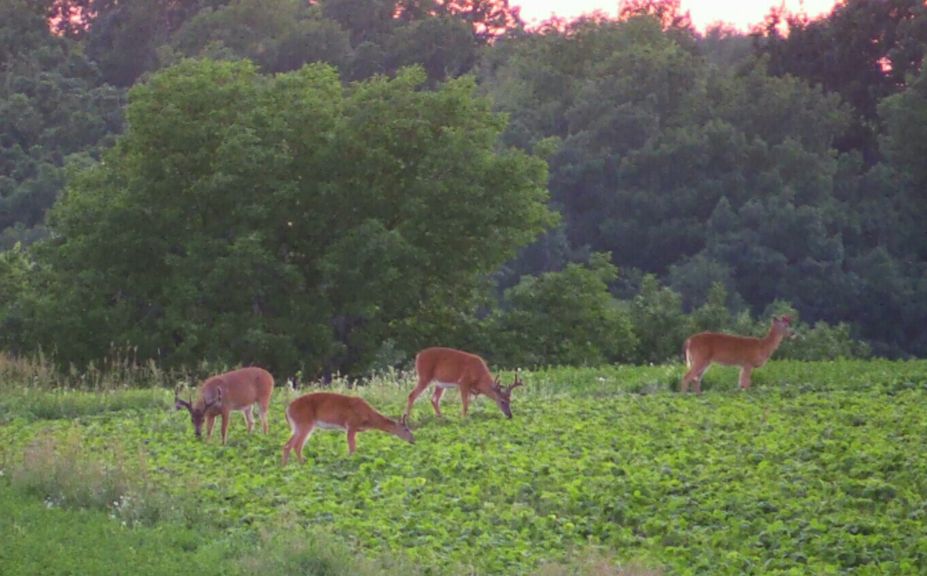
*A great food plot program is a diverse food plot program. Find out a stable base of seed varieties to include first, before ever adding soybeans for deer next, by reading this "Fall Food Plot Rotation Strategy".
The amount ag and cover acres, as well as the number of does, amount of adjacent food sources and even soil types, should all be considered to determine if you should even plant soybeans in the first place.
When can you expect deer to forage on soybeans?
The Hot Times for soybean use, are late Summer and early Winter. Although late planted beans can be productive in October, unless your deer numbers are high, and the surrounding food sources are harvested, many will find that for the peak of the rut, soybeans will often be ignored.
If the Winter begins cold and heavy, you can expect soybeans to be foraged on heavily in late November to early December. However, if the start to the Winter is slow and warm, the same lands that will be foraged heavily in December, may not experience heavy grazing until mid Winter or later.
Should You Plant Soybeans For Deer?
For the majority of you, the answer should be"No",because herd numbers, personal resources, ag acres, soil quality, food plot acres and the lack of complimentary food sources, will often work against you. Also, unless you devote a lot of resources and a high number of acres, your food plot could offer a field of dirt in November, instead of a field of soybean green.
Balance is Key:
I actually recommend soybeans to my clients often, if, they are able to plant a variety of forages along side. Soybeans should rarely be your only planting, in fact in over 600 client plans I have yet to recommend that a landowner do so. If you can estimate that your planting of soybeans for deer will last until the middle of the season, and that they are merely a piece of the pie of a diverse food plot program that already includes various greens and possibly corn, than I would consider planting them.
Another consideration is what your surrounding neighbors offer. For example, if you hold the majority of the quality bedding opportunity on your land, and your neighbors have beans and corn, deer will hammer green when they leave their bedding areas. Deer feed on acorns and woody regen for the majority of the day, so by offering a green food source of brassicas, oats, peas, rye, wheat and clover, you can offer a highly defined afternoon deer movement. By controlling the afternoon movement as well as daytime bedding, you can then send the deer to neighboring corn and bean fields all night, after dark. Greens are highly digestive and contain high moisture levels, which can create ravenous feeding patterns during the afternoon hours, that your neighbors with corn and beans can't compete with. If you have enough room to plant beans, then you can expect to hold deer even longer to insure the highest level of control for pinpoint, daily movements.
Soybeans can be an outstanding planting for deer, but a host of considerations should be analyzed first. And why should you avoid planting soybeans if they are a great Summer food source but have been eaten down to the dirt by the beginning of bowseason? Because deer herds are built during the hunting season, and not before the season even begins.
Summary of Experiences When Planting Beans for Deer:
Maybe you should plant beans for deer, maybe not. The same goes for creating buck beds and mock scrapes, or planting clover, corn, brassicas and rye, and even installing waterholes or other habitat practices. Each practice or seed variety has its place, but only a portion of the time.
I had Southern OH clients who converted their entire inner, idle ag land back to purely beans for 2014. They then lost an entire deer herd for the hunting season. They fell for the soybean craze and it cost them dearly. That could have been an appropriate decison for another parcel, but it was obvious it was not for them. When I designed their land, in the Spring of 2015, I recommended that they stop having the farmer plant beans, pay him for his time to clear and lime the 35 acres the previous year, and then plant switchgrass in portions of the field, allow for native regen to take place in other areas, get rid of the beans and then replace an inner portion with various greens. In the Fall of 2015 they had their best number of bucks, and mature bucks, that they had ever had. Even the rest of the deer herd came back too. In 2016 their season was even better, while harvesting three bucks in the 150s and two bucks in the 160s. No beans - No problem!
The point is that there are huge extremes with beans, from great results on small plots and incredible deer herds for the size of land, to plots and lands much larger with either fields of dirt by October, to standing beans, unused, by March. No one result is false, instead each is very real, and so very few understand exactly why.
So, I will try to help educate folks so they can make informed, unbiased decisions, whether it is for beans, brassicas, corn, clover, rye, buck beds, waterholes, mock scrapes, and any other planting or habitat improvement. There is a time and place for them all but, but while each one of those may be an end-all planting or habitat improvement on one parcel, they can be completely ignored on a nieghbors, for good reason. And those reasons I enjoy experiencing for my career, and then report back to readers.
As someone who is paid to make accurate prescriptions for success on dozens of lands per year across 10-12 states or more, per year, I am in a unique position to experience that what is good for one neighbor, may not be good for another. Folks are just fooling themselves if they think their way is the only way, for everyone else.
I find that on every parcel I learn something new. And at over 600 parcels visited in 22 states since 2005, I am still learning on every parcel I visit. One of the greatest things I have learned is that there are zero absolutes, and that balance is key, even if the same "balance" for one person's success, is someone else's extreme failure. It doesn't make one situation more right than the other, instead just that each prescription was the right balance for their individual set of circumstances. There are many circumstances for maybe planting beans for deer, or maybe not, so it pays to consider each of the variables mentioned, before you proceed.
